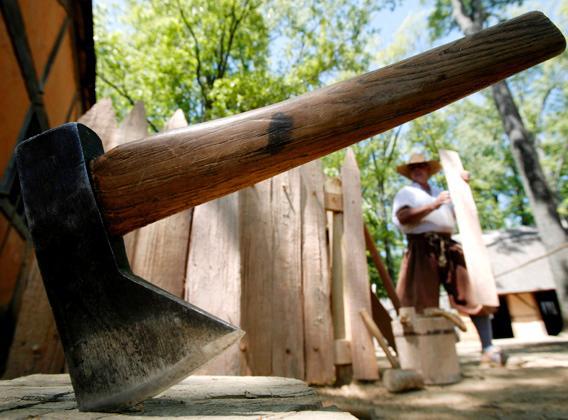The Internet shivered with horror and fascination today at the revelation that the Jamestown colonists cannibalized each other during the dreadful winter of 1609. According to the report in Smithsonian, the skeleton of a 14-year-old girl shows clear signs of being butchered for food, with telltale knife marks on her skull, jaw, and shin. Fellow colonists probably ate her “brain, tongue, cheeks, and leg muscles.” The “starving time” during the first year of Jamestown left most of the 100-odd colonists dead. Ghastly firsthand accounts hinted at cannibalism (as well as the eating of horses, dogs, cats, vermin, and shoes), but this is the conclusive evidence that archeologists and historians have been waiting for.
It’s the nature of taboos that they extinguish the capacity for calm discussion. Cannibalism occupies a dark cellar in our brains. Merely the mention of a famous episode—the Donner Party, Alive, the whaleship Essex, the famine in North Korea, Jeffrey Dahmer—provokes fear and disgust. (I also find that it inevitably provokes transference: It is literally impossible for me to think about an episode of cannibalism and not wonder what I would have done in the same circumstances. I suspect I am not alone in this.) Even when the cannibalism is driven by necessity rather than perversion—so-called “survival cannibalism”—most people are repulsed.
This may make you not want to be in a lifeboat with me, but I have never understood the horror and shock about starvation cannibalism. Human flesh isn’t anyone’s first choice for dinner (or not anyone normal), but the cannibalism taboo has always seemed pretty flimsy as taboos go. In a dire food shortage, one of the very first things you should do is eat the corpses of the dead. Human corpses have the proteins, fats, vitamins, and calories that starving people most need. I don’t endorse sacrificing the living to feed the starving—though even that done through some fair process may be justified in particularly dire circumstances—but cannibalizing corpses to fend off starvation seems like an easy call, and not a disgusting one.
A decade ago, I visited an Ethiopian village destroyed by famine, and I saw what is still the most horrifying thing I have ever seen: a 6-year-old boy named Saoudi—stick legs and arms, distended belly—whose lips and tongue were brown from eating dirt. It’s very likely that Saoudi didn’t survive the year, and if he did, he probably has permanent health and brain damage from the lack of nutrition. There were no corpses to eat in Dire Kiltu, but had there been, would it have been wrong—or even disgusting—for those villagers to have eaten them? To have fed their famished children protein and fat, rather than indigestible dirt and grass and shoe-leather, which is what starving people often eat? Survival cannibalism is terribly sad, because starvation is sad, but it is certainly less sad—and less revolting—than almost all of the alternatives.
So if you ever find yourself with my corpse at a remote plane crash site, you know what to do. These meaty thighs, the well-marbled belly, the beer-soaked liver—they won’t be of any more use to me. Please help yourself.
